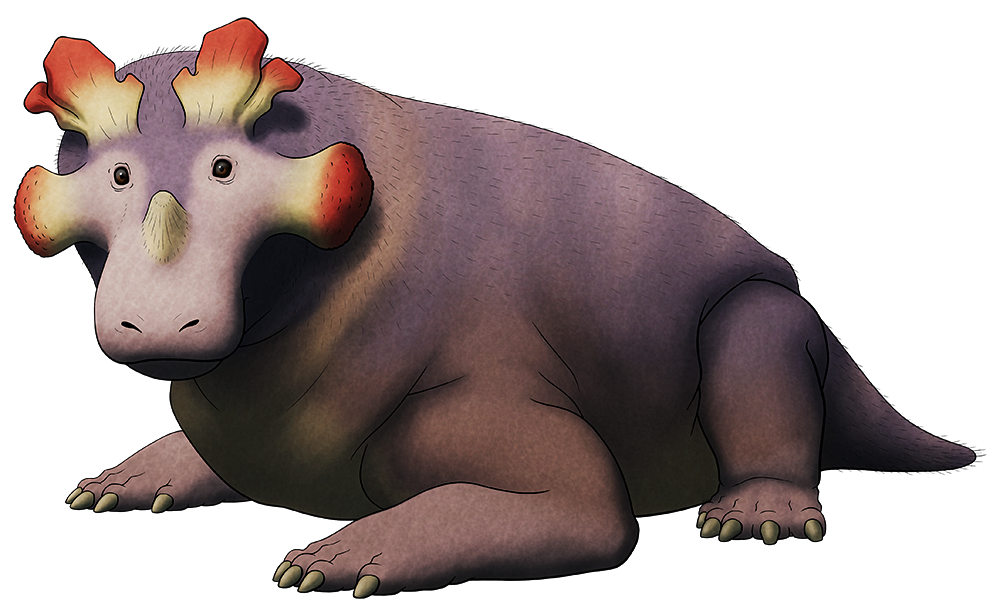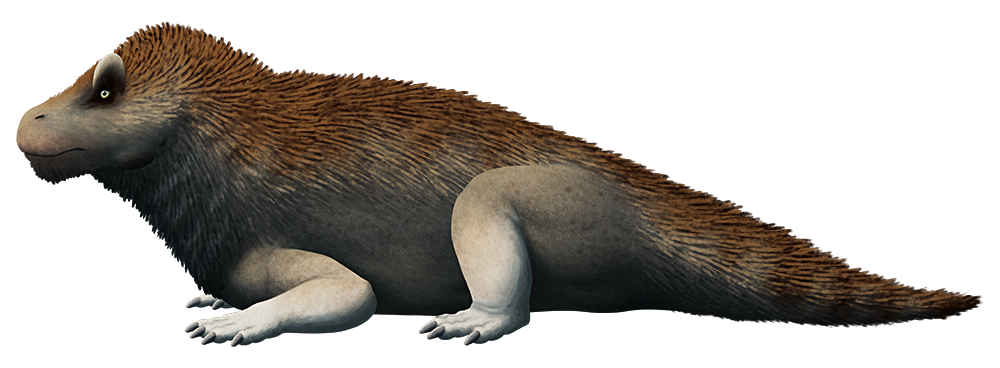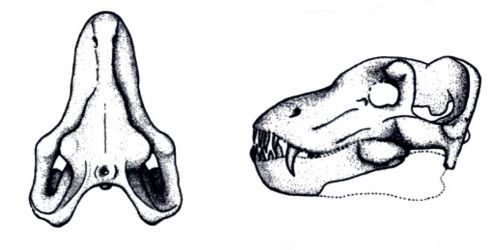The tiny-headed Cotylorhynchus we saw earlier in this series wasn’t the only synapsid with a weird head.
A little more closely related to modern mammals, the dinocephalians were a a diverse group that were found across Pangaea during the middle of the Permian period. Many of them had thickened skulls that may have been used for headbutting each other, and some also developed bony horn-like projections around their faces.
And Estemmenosuchus mirabilis here was particularly elaborately ornamented, earning it a name meaning “wondrous crowned crocodile”. It lived in the Perm region of Russia during the mid Permian, about 268-265 million years ago, and was one of the largest dinocephalians, reaching at least 3m long (9’10”).
It had two big antler-like structures on its head, two wide cheek flanges, and a small nose horn, almost looking like the synapsid version of a ceratopsid dinosaur – and with its big bulky body, fairly erect-legged posture, and herbivorous-or-omnivorous diet it may have been a fairly close ecological equivalent to them, too.
But it’s also possible it was semi-aquatic, and it certainly does have a very hippo-like appearance when reconstructed with a decent amount of soft tissue.
One specimen of Estemmenosuchus even preserved skin impressions around its face, which were described in Russian in the early 1980s. They show scaleless glandular skin with a slightly bumpy texture, similar to that of hairless mammals or some amphibians. Since it occupied a point in the synapsid family tree close to where hair may have originated (somewhere in the Permian therapsids), it’s not clear if it was entirely hairless or if it had just secondarily lost some of it.




